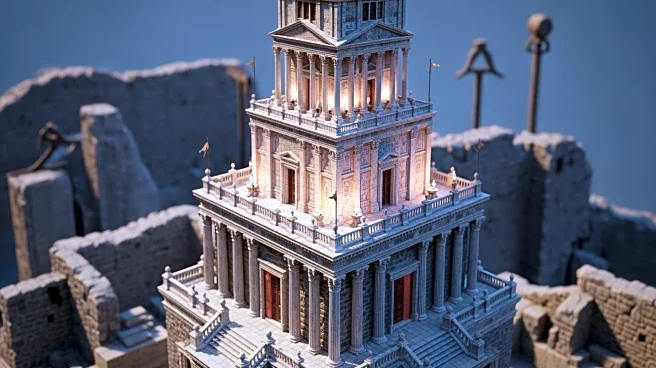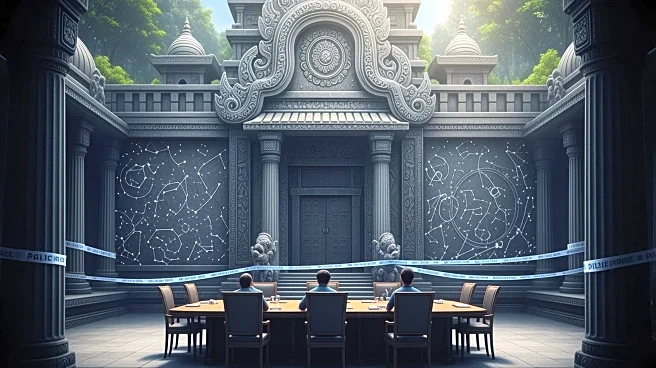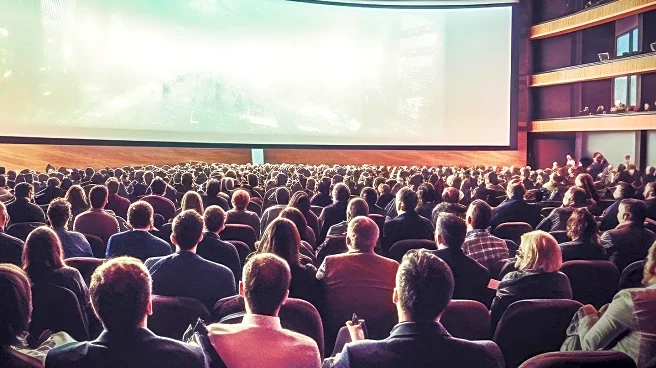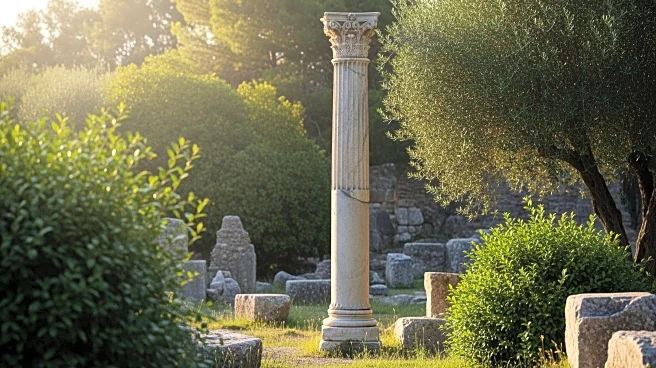What's Happening?
Archaeologists have digitally reconstructed the residential towers of Pompeii using 3D models, revealing upper-level luxury dining spaces with panoramic views. This reconstruction challenges previous assumptions
about ancient architecture and social life in Pompeii's wealthiest homes. The project, led by Berlin's Humboldt University, focuses on the House of Thiasus, a lavish home likely owned by a prominent politician. The house featured a 40-foot tower spread across two levels, with a service room below and an upper dining room offering views of Pompeii. Researchers used laser scanners and detailed photography to create 3D models, extending these digital twins upwards with approximation and plausibility.
Why It's Important?
The findings from Pompeii Reset provide new insights into the social and architectural dynamics of ancient Pompeii. By reconstructing the upper floors of buildings, researchers can better understand the lifestyle and societal structure of the time. This project highlights the importance of digital technology in archaeology, allowing for more accurate reconstructions and interpretations of historical sites. The discovery of luxury elements in urban settings challenges previous notions of ancient Roman architecture, suggesting a blend of suburban villa features within city environments.
What's Next?
The ongoing research at Pompeii may lead to further discoveries about the social hierarchy and architectural innovations of ancient Roman society. As digital reconstruction techniques improve, archaeologists can continue to explore and visualize historical sites with greater accuracy. The project may inspire similar studies in other ancient cities, potentially uncovering new aspects of historical urban planning and social organization.
Beyond the Headlines
The reconstruction of Pompeii's elite villas raises questions about the ethical implications of preserving historical sites. It also highlights the cultural significance of luxury and power in ancient societies, offering a glimpse into the values and priorities of the time. The use of digital technology in archaeology may lead to debates about the authenticity and interpretation of reconstructed sites.














